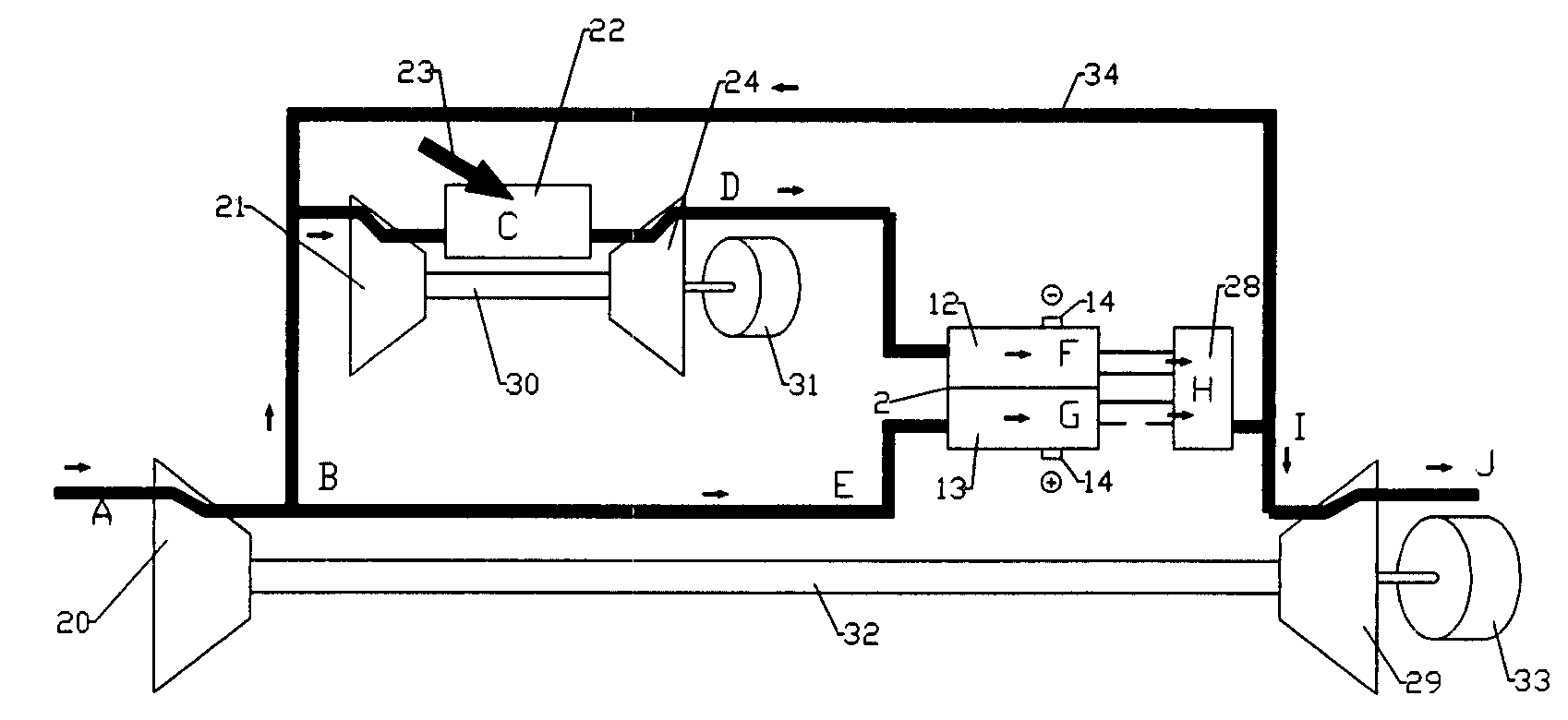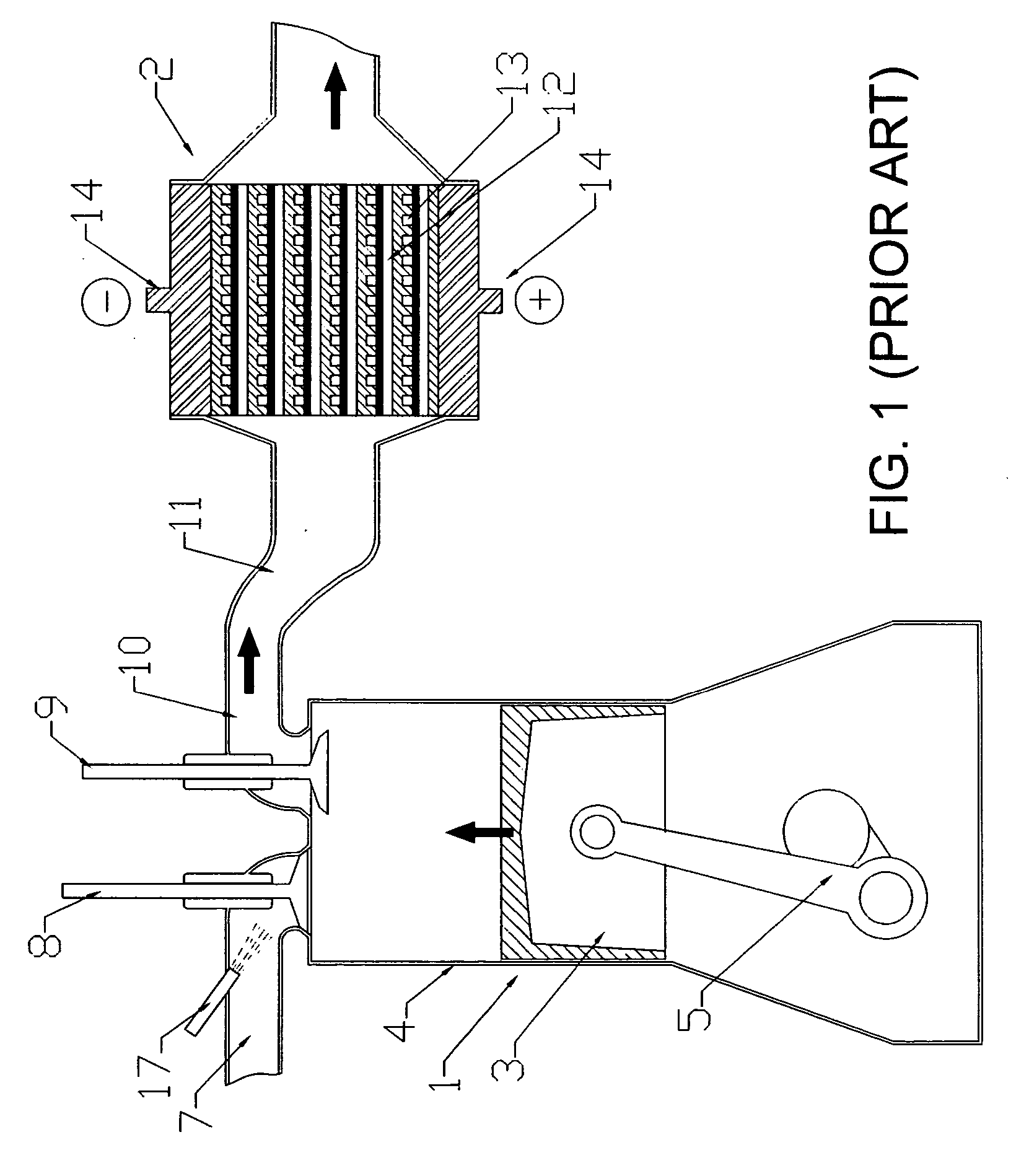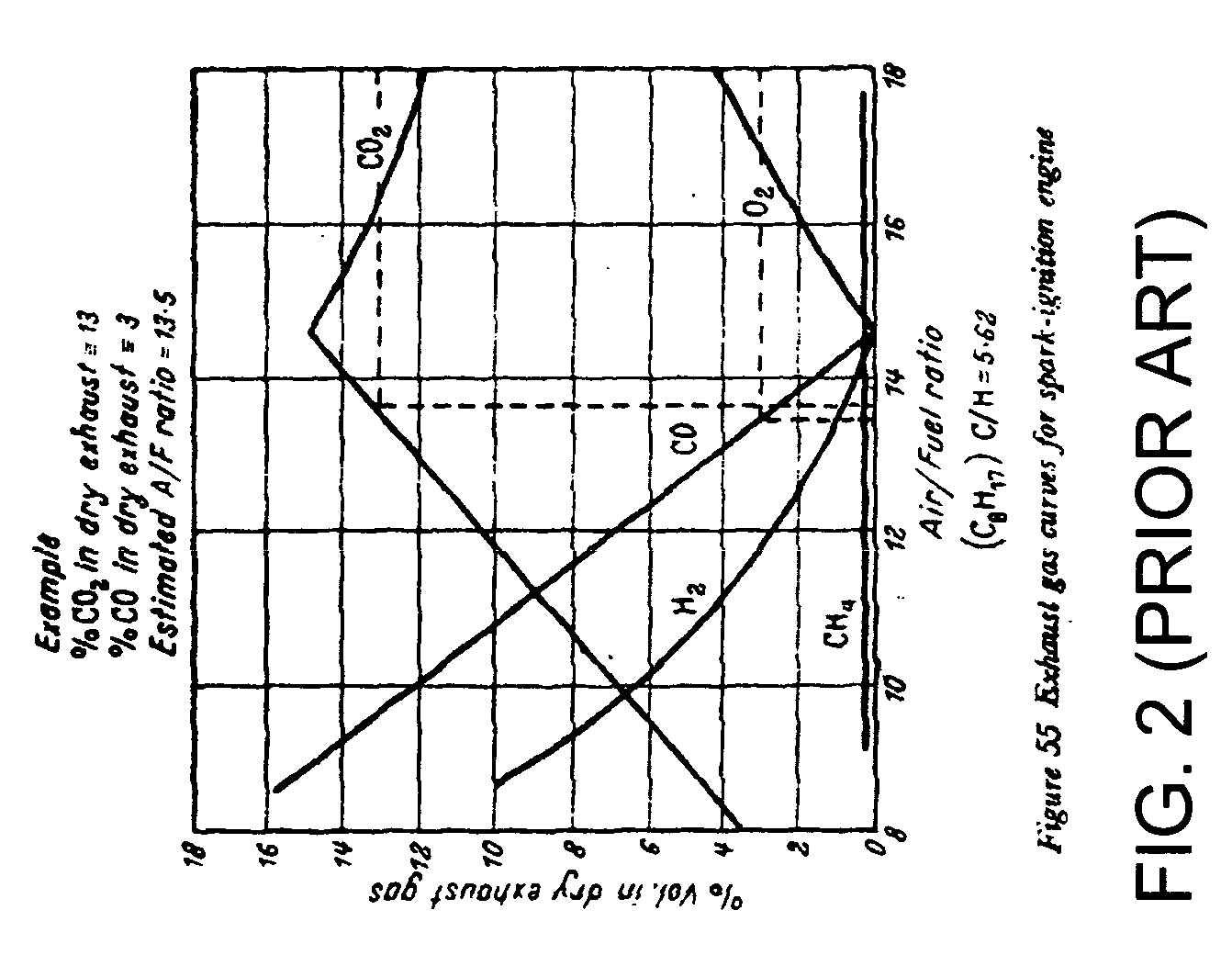Hybrid fuel cell system with internal combustion reforming
a fuel cell and hybrid technology, applied in the direction of electrical generators, emergency supply, sustainable buildings, etc., can solve the problems of difficult processing of “logistic” fuel, and achieve the effects of increasing power plant efficiency, quick starting, and fast respons
- Summary
- Abstract
- Description
- Claims
- Application Information
AI Technical Summary
Benefits of technology
Problems solved by technology
Method used
Image
Examples
Embodiment Construction
[0027] The present invention relates to hybrid energy conversion systems that combine internal combustion engine and fuel cell elements to convert hydrocarbon and alcohol fuels to electric power and shaft power. The present invention is described with respect to Brayton cycle turbomachines. However, it will be obvious to those skilled in the art that the following detailed description is similarly applicable to many types of internal combustion engines including rotary, four stroke Otto cycle reciprocating machines, and two-stroke reciprocating machines.
[0028]FIG. 1 (prior art) illustrates the ICR operation as described in U.S. Pat. No. 6,502,533. The four-stroke engine shown illustrates the basic operating principles of fuel reforming in other engine types, including Brayton cycle engines, operated in the fuel-rich mode. Four-stroke engine 1 is combined with a high temperature fuel cell stack 2. The piston 3 is reciprocated in the cylinder 4 by the connecting rod and crank assembl...
PUM
| Property | Measurement | Unit |
|---|---|---|
| temperatures | aaaaa | aaaaa |
| temperatures | aaaaa | aaaaa |
| gas temperature | aaaaa | aaaaa |
Abstract
Description
Claims
Application Information
 Login to View More
Login to View More - R&D
- Intellectual Property
- Life Sciences
- Materials
- Tech Scout
- Unparalleled Data Quality
- Higher Quality Content
- 60% Fewer Hallucinations
Browse by: Latest US Patents, China's latest patents, Technical Efficacy Thesaurus, Application Domain, Technology Topic, Popular Technical Reports.
© 2025 PatSnap. All rights reserved.Legal|Privacy policy|Modern Slavery Act Transparency Statement|Sitemap|About US| Contact US: help@patsnap.com



